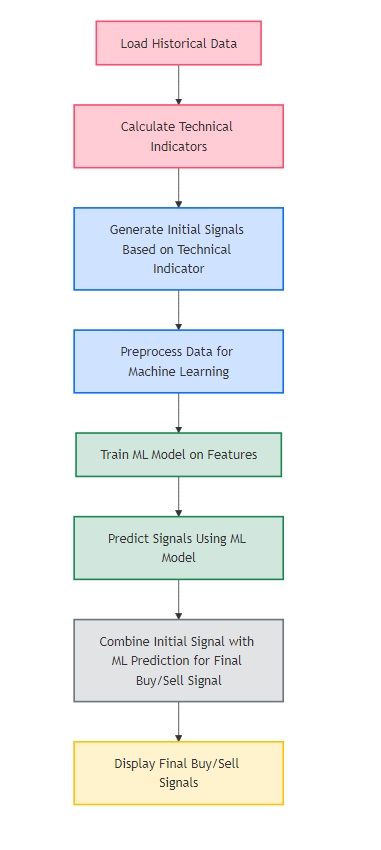AI-Powered Trading System
Comprehensive Guide of Our App (Share Alpha) AI Trading System
A comprehensive guide to our hybrid trading approach combining traditional analysis with machine learning
🌐 Why Use Artificial Intelligence?
Artificial Intelligence (AI) enables computers to mimic human-like decision-making by identifying patterns and making predictions based on historical data. In the context of trading, AI enhances traditional methods by analyzing massive datasets, adapting to changing market trends, and automating complex decision processes, which would be difficult or impossible for human analysts to perform efficiently.
AI systems, such as machine learning algorithms, learn from past market data and make predictions or generate signals. This makes AI a powerful tool for both novice and professional traders, as it can help improve decision-making, reduce human error, and enhance trading performance.
🚀 How Our AI-Powered Trading System Works
Our system acts like a sophisticated financial advisor that combines traditional market analysis with modern AI-driven insights. Here's how it generally operates:
1. Gathering Market Intelligence
We collect historical market data and transform it into meaningful patterns that the system can understand and learn from.
2. Learning from History
Our AI model studies years of market data to learn the patterns that often precede profitable trades.
3. Making Informed Decisions
Combining traditional trading rules with AI insights, the system generates reliable trade signals.
📈 System Flowchart
The flowchart below illustrates the core steps our AI-powered trading system follows from data collection to decision-making:

💻 Technical Overview
Data Preprocessing and Feature Engineering
- Technical indicators calculation: SMA, EMA, RSI, MACD
- Data normalization and standardization
- Time series feature extraction
- Handling missing data and detecting outliers
AI Model Implementation
Ensemble of decision trees (Random Forest Classifier) for signal prediction (Note: Any of AI models can be used)
Architecture: Ensemble of decision trees (n_estimators=100)
Hyperparameters: max_depth, min_samples_split, criterion
Feature Importance: Built-in ranking of technical indicators
Hybrid Signal Generation
Signal Composition:
final_signal = α * ml_prediction + (1 - α) * traditional_signal Where α is the ML confidence weight (0.0 to 1.0)
🎯 Key Benefits
Adaptive Learning
Continuously learns and adapts to changing market conditions
Risk Management
Multiple validation layers reduce false signals
Performance Tracking
Built-in metrics for strategy evaluation
Flexibility
Customizable parameters for different trading styles